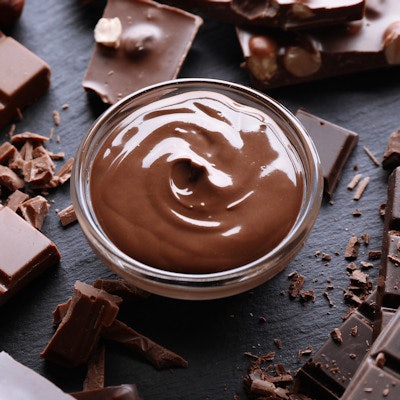
Each year, online retailer candystore.com lists the 10 best and worst Halloween candies. This year, the worst list is filled with chewy, gummy, cloyingly sweet treats, such as licorice, circus peanuts, and candy corn, but no chocolate.
Chocolate is the star of the best list. Reese's Peanut Butter Cups, Snickers, and Twix hold the top three spots, in that order. Maybe the allure of chocolate is its silky, smooth mouthfeel?
Researchers are on it. Using a unique x-ray technique, they determined that chocolate's microstructure affects how quickly or slowly chocolate melts in the mouth, contributing to the pleasing mouthfeel consumers crave.
"Basically, we're trying to see whether these particles (in chocolate) have a more open or a more closed structure and to correlate that to the mouthfeel experienced by consumers," stated Fernanda Peyronel, PhD, a researcher from the University of Guelph at the Advanced Photon Source at the U.S. Department of Energy's Argonne National Laboratory, in a news release issued by the lab.
Currently, chocolate gets its smooth and creamy texture from a process known as tempering, which requires a chocolate mixture to be cooled and heated repeatedly. If this process doesn't occur or is done incorrectly, it results in a grainy texture and affects its microstructure.
Chocolate manufacturers want to know what properties and processes affect final taste because the tempering process is expensive and time-consuming. Also, some makers want to save money by eliminating or using less cocoa butter, but it is unclear what that would do to the taste and texture.
The little differences
The difference between a piece of chocolate with a smooth texture versus a grainy one has to do with the amount of open space it has at the microscopic level, which may change the way it melts on the tongue, the researchers explained.
A technique called ultrasmall-angle x-ray scattering was used to explore the fractal dimension, a specific feature of the geometric configuration of tiny particles of chocolate. The technique, which allows for small- and large-angle scattering, allowed the scientists to resolve particles that range in size from a few hundred nanometers to around 10 µm, which is approximately the limit at which taste buds can differentiate among different textures, they said.
"Our tongues are actually pretty good detectors at this length scale," noted Jan Ilavsky, PhD, an x-ray physicist at Argonne. "Based on how compact or how open the structure is, that can possibly have an impact on how fast or how slowly the chocolate melts."
In the past, the x-ray technique was used to investigate other fats, such as cocoa butter. The researchers began looking at chocolate as a multi-ingredient substance, containing cocoa butter, cocoa powder, sugar, and emulsifiers, to get a more comprehensive look at the relationship between its microstructure and mouthfeel.
"We're not merely interested in this question because we want to find out why chocolate tastes good," Ilavsky stated. "There are major energy and cost savings to be gained as well."




















